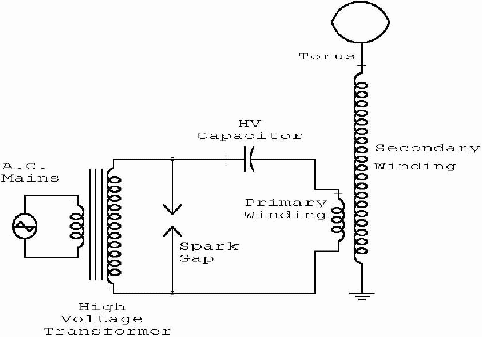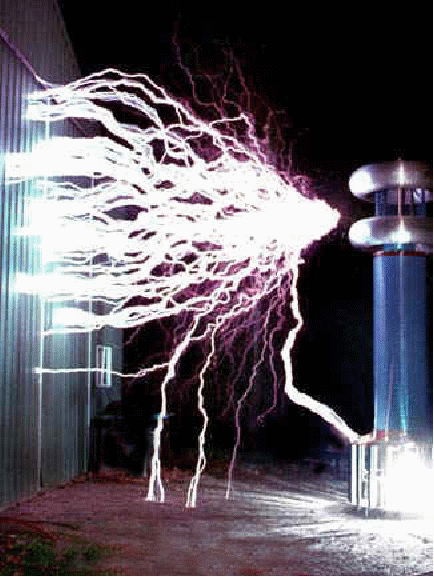Basic Tesla coil theory involves the property of resonance. When a coil and capacitance are connected in parallel and briefly pulsed with a voltage, the discharge flows back and forth between the two at a frequency that depends on the values of both, until dissipated by the resistance of the two. Change the value of either one and the resonant frequency changes. In a Tesla coil, there are actually two resonant circuits connected together. One, between the capacitor and the primary, the other between the secondary and the same capacitor.

As the potential across the gap increases, the charge across the capacitor also increases. When the gap breaks down, meaning the charge across it is sufficient for electrons to jump across, it sparks and causes the capacitor to discharge through the primary. This discharge then resonates back and forth through the primary and to alternate plates of the capacitor until the charge across the gap builds up again. Since the secondary is also connected to the capacitor, the secondary also resonates. When the frequency of the capacitor and primary circuit resonates at the same frequency as the capacitor and the secondary, the voltages add, and the output goes up through the roof. The frequencies involved are in the hundreds of thousands of Hz, and the voltages can reach into the hundred thousands or even millions of volts.
The effect can be stunning.



